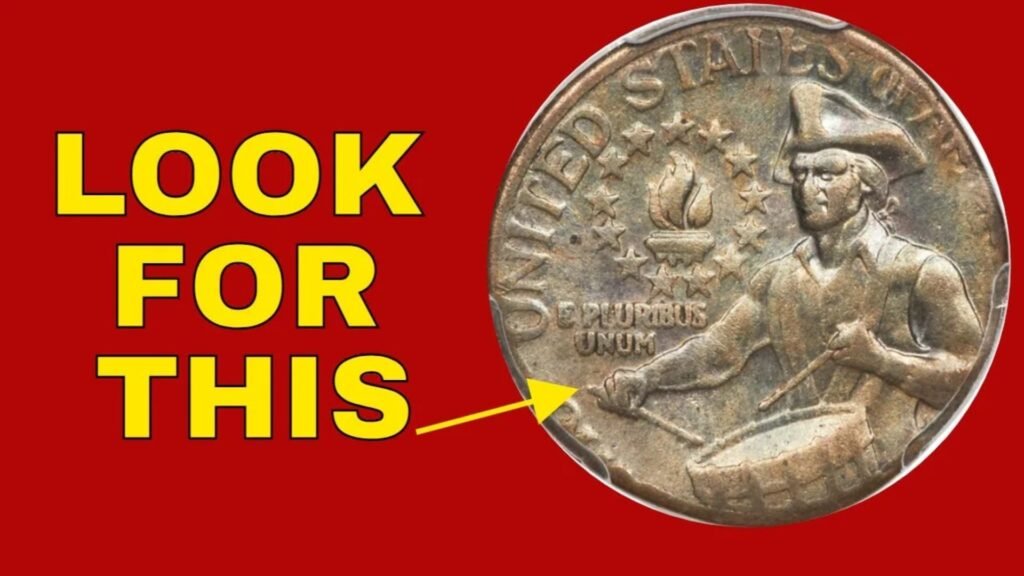Imagine fishing a quarter out of your pocket to pay for a coffee, only to realize it’s worth $2.5 billion. Sounds like a Hollywood movie, right? But rumors of a rare 1976 Bicentennial Quarter, still floating around in circulation, have coin collectors and everyday folks buzzing with excitement. This isn’t just pocket change—it’s a potential life-changing treasure. In this post, we’ll dive into the fascinating story of this legendary coin, why it’s so valuable, and how you can spot one. Let’s uncover the truth behind the hype and see if you’re sitting on a fortune.
What Is the Bicentennial Quarter?
In 1976, the United States celebrated its 200th birthday with a nationwide party of red, white, and blue. The U.S. Mint joined the festivities by releasing the Bicentennial Quarter, a commemorative coin honoring America’s independence. Unlike regular quarters with an eagle on the back, this one featured a colonial drummer, a victory torch, and 13 stars for the original colonies. The front kept George Washington’s portrait but added a dual date: “1776–1976.”
Over 1.6 billion of these quarters were minted in Philadelphia, Denver, and San Francisco, making them common even today. Most are worth just 25 cents. But whispers of a rare variant—valued at an astonishing $2.5 billion—have sparked a modern-day treasure hunt. Could this coin really exist, and is it hiding in your change jar?
Why Is This Quarter Worth $2.5 Billion?
Let’s address the elephant in the room: no Bicentennial Quarter has ever sold for $2.5 billion. The claim sounds like clickbait, and experts like those at the Professional Coin Grading Service (PCGS) argue it’s unrealistic. Even the rarest coins, like the 1933 Double Eagle ($18.9 million) or the 1794 Flowing Hair Silver Dollar ($10 million), don’t come close. So, where does this jaw-dropping valuation come from?
The $2.5 billion rumor likely stems from a mix of speculation, viral internet stories, and the allure of rare coin errors. Collectors believe a one-of-a-kind Bicentennial Quarter could exist with unique traits, such as:
- Minting Errors: Double strikes, off-center designs, or missing inscriptions can make a coin a collector’s gem.
- Unique Composition: Some speculate it was struck on a gold or high-purity silver planchet by mistake.
- Prototype or Test Coin: A pre-production coin might have slipped into circulation.
- Historical Significance: If it was owned by a notable figure or tied to a special event, its value could skyrocket.
While no evidence confirms a $2.5 billion sale, rare Bicentennial Quarters have fetched impressive sums. For example, a 1976-S Silver Proof Quarter sold for $19,200 at auction, and error coins have gone for thousands. The dream of a billion-dollar coin keeps the hunt alive.
The Allure of Coin Collecting
Coin collecting, or numismatics, is more than a hobby—it’s a blend of history, art, and the thrill of discovery. The Bicentennial Quarter connects us to 1976, a year of patriotic pride. Each coin tells a story: the mint workers who struck it, the hands it passed through, and the errors that make it unique. Even if you don’t find a $2.5 billion quarter, the search is rewarding.
Take Sarah, a retiree from Ohio. In 2020, she inherited her grandfather’s coin collection and found a Bicentennial Quarter with an off-center strike. After grading, it sold for $3,500—enough to cover her car repairs. Stories like hers show that treasures can hide in plain sight, fueling the excitement around rare coins.
How to Spot a Rare Bicentennial Quarter
Ready to check your change? Here’s what to look for to identify a potentially valuable Bicentennial Quarter. You don’t need fancy tools—just a magnifying glass, good lighting, and a keen eye.
Key Features to Examine
- Dual Date: Confirm the “1776–1976” on the front. All Bicentennial Quarters have this.
- Mint Mark: Look for a “D” (Denver), “P” (Philadelphia), or “S” (San Francisco) near Washington’s head. San Francisco-minted silver coins are more valuable.
- Condition: Coins in mint or uncirculated condition (graded MS-65 or higher) fetch higher prices.
- Weight: Silver versions weigh 5.75 grams, slightly heavier than the 5.67-gram copper-nickel clad coins.
Common Minting Errors
- Double Die: Look for doubled text, like “LIBERTY” or “IN GOD WE TRUST.” These errors can be worth hundreds or thousands.
- Off-Center Strike: If the design is misaligned or missing edges, it’s a collectible error.
- Wrong Planchet: A quarter struck on a silver or gold planchet is extremely rare and valuable.
- Missing Inscriptions: Coins lacking key text, like “E PLURIBUS UNUM,” are highly sought after.
Real-Life Example
In 2018, a California man paid for gas with pocket change and later noticed one quarter had a double-die error. After grading by PCGS, it sold for $12,000 at auction. These stories prove valuable coins are still out there, waiting to be found.
How to Verify and Sell a Rare Coin
Found a suspicious quarter? Don’t clean it—cleaning can reduce its value. Follow these steps to verify and potentially sell your find:
- Consult an Expert: Take it to a reputable coin dealer or grading service like PCGS or Numismatic Guaranty Corporation (NGC).
- Get It Graded: Professional grading confirms authenticity and condition, boosting its market value.
- Research Recent Sales: Check auction records on sites like Heritage Auctions to gauge its worth.
- Choose a Selling Platform: Options include online auctions (eBay, Heritage Auctions), coin dealers, or numismatic societies.
For example, a 1976-D Clad Double Die Obverse Quarter sold for $8,400 in 2023, showing the potential for high returns with the right find.
The Truth Behind the $2.5 Billion Myth
While the $2.5 billion valuation is likely exaggerated, it highlights the power of rare coins to capture our imagination. Numismatic experts caution that even the rarest Bicentennial Quarters are worth thousands or millions, not billions. The hype often comes from viral posts or misinterpretations of auction estimates.
Still, the possibility of finding a valuable coin keeps collectors hooked. As coin expert John Dannreuther puts it, “The beauty of numismatics is that anyone can stumble upon a treasure. You just need to know what to look for.” The $2.5 billion rumor may be a myth, but it’s revived interest in coin collecting and American history.
Tips for Aspiring Coin Collectors
New to numismatics? Here are some tips to start your treasure hunt:
- Start Small: Check your change or visit coin shops to build your collection.
- Learn the Lingo: Understand terms like “mint mark,” “proof coin,” and “double die.”
- Join a Community: Numismatic societies or online forums like CoinTalk offer advice and connections.
- Stay Informed: Follow auction results and read publications like Coin World for market trends.
Even if you don’t find a billion-dollar quarter, collecting coins is a fun way to connect with history. A 1976-S Silver Proof Deep Cameo Quarter, for instance, sold for $2,760 in 2007—a nice find for any collector.
Could You Have a Treasure in Your Change?
The Rare Bicentennial Quarter valued at $2.5 billion may be more legend than reality, but its story inspires us to look closer at the coins we handle every day. With over 1.6 billion Bicentennial Quarters still in circulation, there’s a slim but thrilling chance you could find a valuable error coin. Whether it’s a double-die worth thousands or a silver variant worth a few bucks, each coin is a piece of history.
Next time you get change at the grocery store, take a moment to inspect your quarters. You might not find a $2.5 billion coin, but you could uncover a hidden gem. As the saying goes, “Sometimes, the smallest things hold the greatest value.” So, grab a magnifying glass and start hunting—your fortune might be just a quarter away.
Frequently Asked Questions
What makes the Bicentennial Quarter valuable?
Rare minting errors, silver composition, or pristine condition can increase its value. While most are worth 25 cents, some error coins have sold for thousands.
How can I tell if my quarter is rare?
Check for the “1776–1976” date, mint mark, and errors like double strikes or off-center designs. Weigh it to see if it’s a heavier silver version.
Where can I sell a rare Bicentennial Quarter?
Sell through online auctions (eBay, Heritage Auctions), coin dealers, or numismatic societies after professional grading.
Is the $2.5 billion quarter real?
No quarter has sold for $2.5 billion. The claim is likely exaggerated, but rare variants can still be worth thousands or millions.
Disclaimer: Coin values vary based on market demand and condition. Always consult a professional appraiser for accurate valuations.



